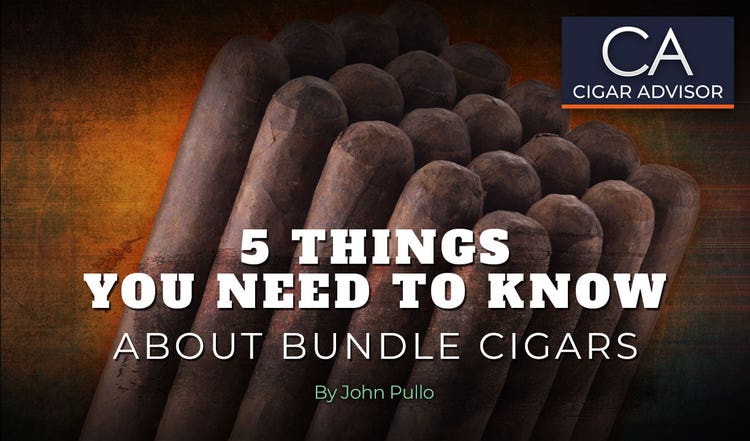
5 Things You Need to Know About… Bundle Cigars
Looking for a “hidden gem” cigar?
Start browsing the bundles. I’m serious. Today’s bundle cigars don’t scream “I’m a cheapskate” the way they used to.
Bundles are a relatively recent development within the cigar business, maybe within only the past 50 years. And the bundle “reputation” (you know what I mean – cheap) stems from two things: the fact that cigars and cigar boxes have been tied together for well over 150 years, and that those first bundle cigars were second-rate in construction, flavor, and – well, pretty much every department.
At first, boxes were just a method of transporting (and taxing) finished cigars; soon, cigar makers realized that image sells cigars, too. And because just a name on a cedar box wouldn’t do, cigar makers have developed some distinctive packaging throughout the years.
We should be fair, though… compared to the cigars of today, a lot of the cigars that were made 50 years ago weren’t great. Quality has improved within the industry, in both growing and manufacturing – they’re making a better product. Yesterday’s seconds would never make it to market, with their banged-up wrappers and construction issues. Today’s seconds will usually smoke fine, while the appearance is “not the best, but still pretty good”: you might see small blemishes on the wrapper, like inconsistent coloring or water spots that appeared while curing the leaf.
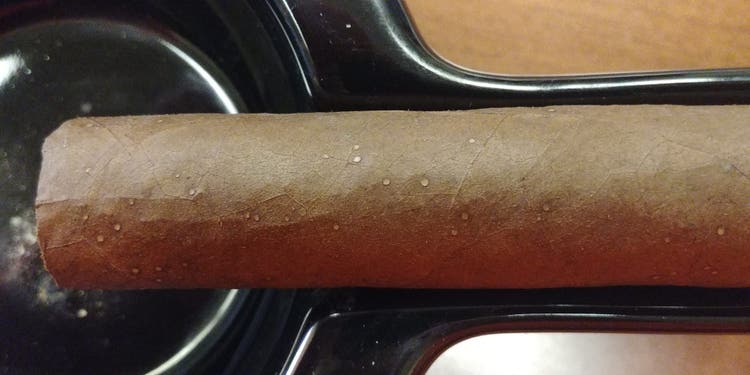
There’s also a stage in the production process where a huge batch of finished cigars is laid out on a table in the factory, and each cigar in that batch is sorted for consistency in color. That’s why all 20 cigars in a box look the same – they were specifically grouped by their color. So what happens when there’s a couple of hundred cigars from that batch that are without a match? They might go into a bundle, along with hundreds – or thousands – of other “orphans.”
The once-lowly bundle offering has transcended the “seconds.” A watchful eye on tobacco growing conditions and strict quality control at the tobacco sorting tables helps keep fewer gnarly-looking leaves from making their way into the wrapper supply – so a lot of what qualifies as seconds these days are cigars that smoke great, but just may not look the part. For some factories, bundle cigars are fertile training ground for new cigar rollers…you don’t just hire someone off the street to roll Liga Privadas. They have to work their way up to that level – and the cigars they roll along the way might have a cap that’s a little sloppily applied, or the body of the cigar ends up a little bumpy. A tabacalera’s trainees have to start somewhere…
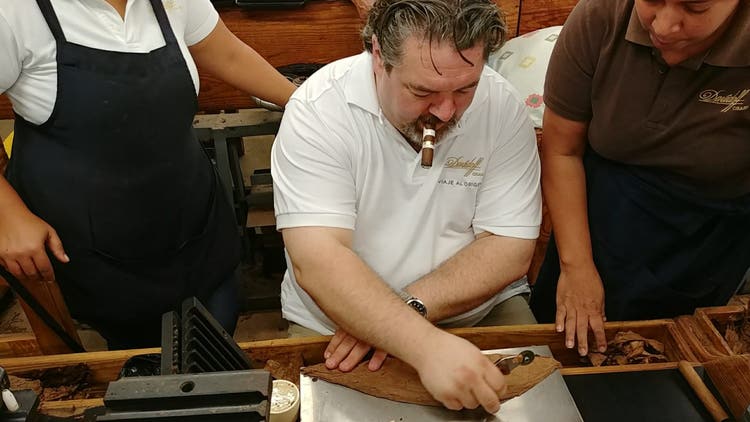
Boxes vs. Bundles – My Economics Lesson
Early in my cigar smoking days, I flipped through a cigar catalog and wondered out loud: “Why are the bundle cigars cheaper?” The answer I got from a friend was, “Because they’re cheap. Boxes are firsts, bundles are seconds.”
Tell that to Jonathan Drew. Or Nick Perdomo. Or Oscar Valladares. Or Nestor Plasencia. Or AJ Fernandez. Or…you get the idea. Many of today’s best bundle cigars come out of the world’s top cigar factories, made to smoke just as nice (or better) than the box stuff. And none of them would ever be perceived as “low value.”
Some cigar makers are designing blends specifically for this segment of the market – and they’re not limiting it to only low-budget selections, either.
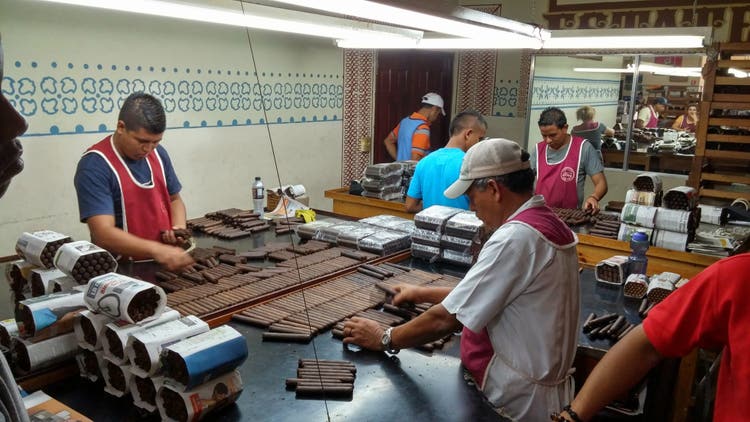
You Get What You Pay For
When you buy cigars, do you know what you’re actually paying for? You’re expecting quality premium tobacco, in a cigar made by hand. Good leaf is expensive – growing conditions can make it hard to get, and demand will drive up the bidding price.
You’re also buying the box the cigars come in, adding a quick couple bucks to your bill.
Sure, buying bundle cigars means you don’t get all the arty features of a box – but if you care more about what’s inside, you’d gladly take those smokes a little cheaper. Plus, without a box, you get the added benefit of being able to inspect the condition of the contents inside (we cigar smokers don’t like “surprises”). If that’s you, then bundles are a great way to fill your humidor fast with low-cost, high-quality cigars.
So if you’re bundle-curious, or just fact-hungry to know a thing or two about how things work in the cigar business – here are 5 Things you can use to show you know about bundle cigars…

Bundles are Cigar Economics in Action. Follow the supply chain: procurement of the tobacco, then prepping the leaf. After that, the cigars are made and packaged. But it doesn’t stop there; there are additional costs associated with shipping, warehousing, distribution and retailing, too. But let’s just focus on the packaging step, because that’s where a cigar maker must decide: box or bundle?
If the cigars are destined for a box, the cigar maker already starts seeing his per-cigar cost going up – how much a box costs is determined by what it’s made of, and where. And it’s not just the cost of the wood to make the box, it’s how readily available is the wood – is it sourced locally, or imported? In the case of cigars made in the DR, the wood is imported; in Nicaragua it’s home-grown. Then it’s extra for the box hardware, like the hinge and the clasp. There’s a machine that attaches those bits to the box, and that costs money too. You also have to pay the guy running it. Many wood boxes are beautifully designed, so if it requires joinery to assemble it, you need the tools to do it – and more people to run the equipment.
How will the box look when it’s done? If you go with an enameled box like Camacho or Winston Churchill do, they’re wicked pricey. Drew Estate buys their boxes, then paints and screen prints some of them (like Larutan) at Subculture Studios. Perdomo Cigars is a vertically integrated operation, and has its own box factory – so Nick’s people do all the steps of box making, right down to the lacquer finish – which he’s explained here in detail.
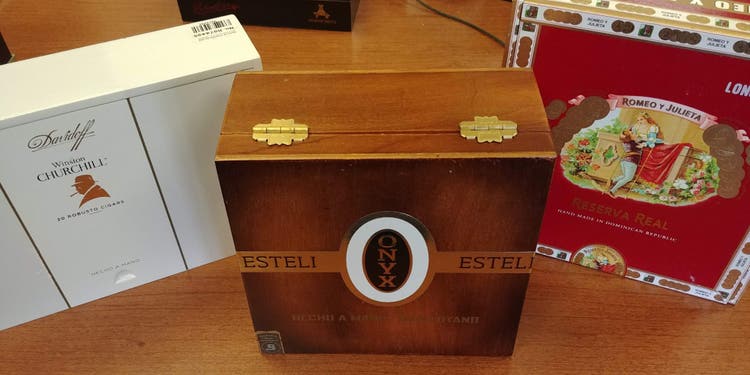
Or, the cigar maker could choose to put his cigars in a paper box: the technical term is “wrapset box,” where labels are applied bound to the box with edging strips to cover the seams. Today’s wrapset boxes are actually made of medium-density fiberboard (MDF), which is essentially sawdust combined with wax and resin, then fused into a board with pressure and heat. A cheaper option, but still not bundle cheap.
More stogie-nomics: factor in the labor cost to build (or money to buy) the boxes, then scale up to the number of boxes needed to ship hundreds of thousands of cigars to stores all over the world – and it adds up fast. One estimate I read says putting them in a box can easily cost you $1 more per cigar.
On the other hand, bundles are the cheapest form of cigar packaging – with not much more to account for than a cello machine and some labor, the money saved at the factory can be passed along to you. Which is great if a factory is making a small batch cigar, and can keep that fancy new limited edition smoke affordable for everyone to enjoy. Or in the case of Southern Draw’s 300 Hands cigars, the lower production cost allows for a portion of each sale to be donated to charities that support the needs of families and communities in Nicaragua.
So when you buy bundle cigars, you’re saving +/- 20 cents per smoke, which is what the bundle is designed to do: keep your out-the-door price as low as possible.
Which leads us to…

You buy bundle cigars for the same reason you shop at Walmart & Costco. Or, the same reason you buy cereal in a big bag – more, for less. Ask yourself: why would you buy a box of Froot Loops for 4 bucks, when you can buy a bag of Fruity-Oh’s that’s twice as big for 3? (Assuming you’re not some sort of cereal purist, of course.) Same for the bundle – it’s an easy-to-enjoy box alternative that, very often, is made by the same company with much of the same tobaccos as the pricier primos.
And that’s another benefit – if you find you like Flor de Oliva bundle cigars, you’re probably intrigued enough by their good flavor to consider trying one of their boxed brands. Because you got a good, wallet-friendly taste of the kind of quality you can expect from Oliva, making the jump to a Serie G is an easy decision. No one wants to put their name on a bad cigar – so if a manufacturer rolls what you think is a good bundle cigar, the chances are good that their other cigars will be even more enjoyable.
Another perk, but for retailers: it’s easier to display bundle cigars to you (called a “facing”) in the shop, as they often take up less space than boxes do on the shelf – leaving room for more variety. They store easier in the store’s humidor, too…which shop owners should love.

More & More Bundles are Factory “Firsts.” Meaning first quality. Bundle cigars may have started in life as the landing spot for rolling table duds, but that’s happening less and less today. Some factories won’t even let their seconds out of the building anymore – again, who wants their name attached to a poor-quality smoke?
For those cigars that aren’t rejects from the color matching table or rolled by less-experienced hands, a tabacalera might produce cigar bundles that just may be leftovers – overruns. Let’s say a factory has a contract to make 250,000 cigars…but the torcedores have enough tobacco to roll 325,000 (the overage often allows for QC-rejected sticks, too), and they use up the supply. First, they fire their tobacco buyer for bringing in too much leaf to do the job (I’m kidding, but only kind of.). But those extra 75,000 cigars can go into an aging room, taking up space and not bringing in any money – or, they can be packaged and sold as a separate run of bundles. It could also be something as simple as the factory doing a one-time run of this cigar. Or maybe a manufacturer has a quantity of tobacco that isn’t slated to be used on any projects – he can make a big batch of cigars out of this “unspoken-for” leaf. Who knows, maybe that original contract for the 250k cigars fell through! However they got there, your deal has arrived.
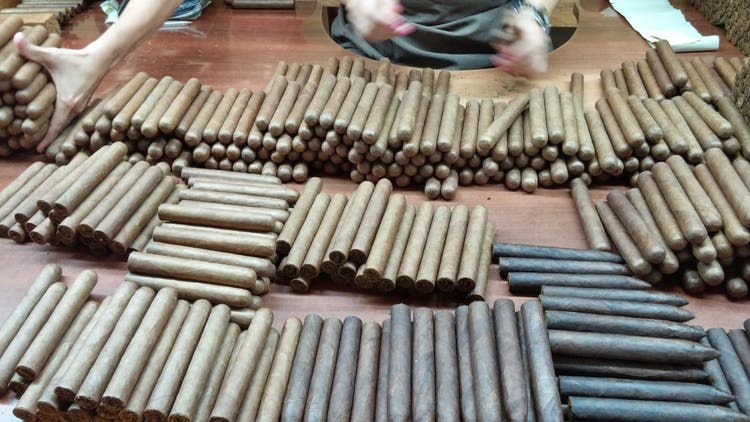
Many times, bundle cigars are a chance for a company like ours to do more affordable private label blends: from things like VUDU by J Fuego to the Famous Nicaraguan Selection 3000 (made for us by Oliva), and the Nicaraguan 4000 and 5000, both made by AJ Fernandez – they’re made expressly for this purpose.

Bundle cigars are the “box wine” of premium tobacco. When the first boxes of wine hit store shelves, the serious vino-philes were horrified…”those heathens, ruining this beautiful thing of ours with their cheap juice.”
That sounds familiar…the cigar snoots got their ascots in a similar twist when bundle cigars went from “cigarbage” for tobacco luddites to being accepted as a legit cigar smoking option.
I draw this comparison to boxed wine for a couple of reasons:
In sum, there are many boxed wines that the pros consider very drinkable, and are as good (or better) than that glass of house wine you ordered at dinner…I think it’s fair we can say the same about many bundle cigars, too.

Bundle cigars are how the cigar industry is “going green.” Smoking bundle cigars should allow you to smoke a little more guilt-free.
Granted, using more cellophane on cigars means there is a significant increase in the amount of plastics now flying around…but if you look at the bundle cigar making process from a renewable resource aspect, bypassing boxes means saving a lot of trees. Bundle cigars are even more environmentally friendly when it comes to those paper-wrapped “soft pack” style bundles. That because more cigar makers are training their sights on sustainability: Drew Estate put their Nica Rustica cigars in soft packs because of their company initiative to rely less on wood from Nicaragua. In an effort to lessen their environmental footprint, Christian Eiroa’s CLE Cigars replenish the trees they take in Honduras to make their boxes – as does Nick Perdomo, whose company plants three trees in Nicaragua for each cedar that’s cut to make Perdomo cigar boxes.
While people have crafted some pretty awesome things out of their empty cigar boxes, it’s impossible to recycle them all – even if we could, there just aren’t enough hands (and talent) to play all those cigar box guitars.
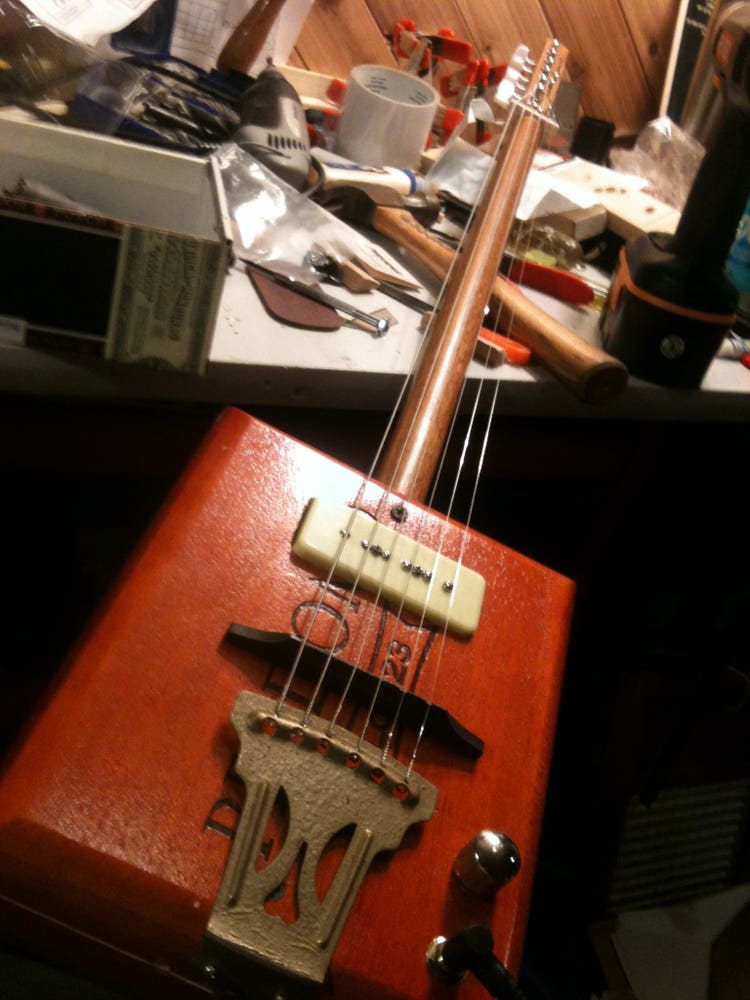
So that’s at least 5 Things you need to know about the bundle cigar – use them to your advantage, next time you’re ready to give your humidor a refill!